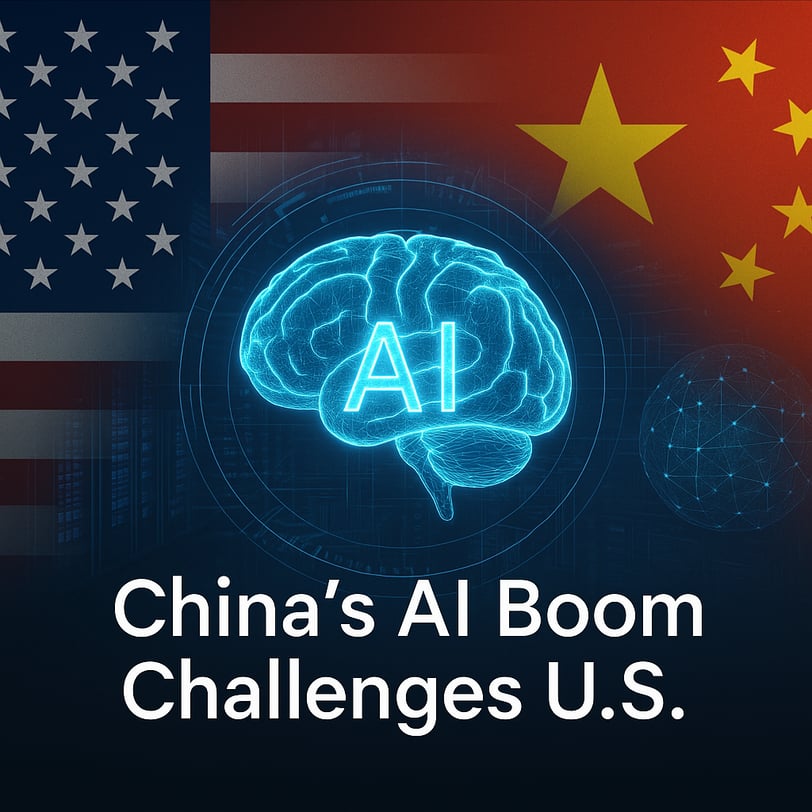China’s AI Boom Challenges U.S. Dominance as DeepSeek Sparks Global Innovation
AI


As of March 31, 2025, the artificial intelligence (AI) landscape is witnessing a seismic shift, with China emerging as a formidable player in the global AI race, largely driven by the success of DeepSeek, a Chinese AI firm. DeepSeek’s breakthroughs in building cost-effective large language models (LLMs) have not only revitalized China’s tech industry but also posed a significant challenge to Western AI giants like OpenAI and Nvidia. This development, reported by Bloomberg on March 26, 2025, highlights a trend where Chinese companies are leveraging generative AI to mitigate the impact of U.S. tariffs, a stark contrast to the dynamics of President Donald Trump’s first term. The rise of DeepSeek has sparked a wave of innovation, with posts on X noting recent advancements like DeepSeek-V3, alongside other global AI developments such as Google’s Gemini 2.5 Pro and OpenAI’s latest models.
DeepSeek’s success lies in its ability to demonstrate that building advanced AI doesn’t require billions of dollars, a model that has inspired a flurry of activity in China’s tech sector. According to CNBC, this efficiency-driven approach is enabling Chinese firms to compete on a global scale, even as U.S. tariffs loom large. The company’s operations in Urumqi, Xinjiang, where it has set up computing infrastructure to support its LLMs, underscore China’s strategic push to bolster its AI capabilities. This trend is part of a broader movement where AI development is shifting from a focus on scale to efficiency and accessibility, allowing smaller players to enter the fray. Awadallah, a Palo Alto-based startup founder, warned in the Bloomberg report that this could lead to “significant margin compression” for Western AI firms, as cheaper, high-performing models flood the market.
Meanwhile, the global AI community is buzzing with other notable advancements. Google unveiled its next-gen AI reasoning model, Gemini 2.5 Pro, on March 25, 2025, as reported by TechCrunch, aiming to enhance its competitive edge in AI-driven applications. OpenAI, not to be outdone, announced improvements to its AI voice assistant, making it more conversational, according to a TechCrunch post on March 24, 2025. On the other side of the spectrum, North Korea’s Kim Jong Un inspected AI-equipped “suicide attack drones” on March 27, 2025, per the BBC, raising concerns about the militarization of AI technology, possibly with Russian assistance. These developments reflect the dual nature of AI’s evolution—its potential for innovation and its risks in geopolitical conflicts.
However, not all news is optimistic. A survey of 475 AI researchers, reported by Live Science on March 27, 2025, revealed that 76% believe current LLMs are a “dead end” for achieving artificial general intelligence (AGI), challenging the tech industry’s narrative that scaling up models will lead to human-level intelligence. This skepticism contrasts with bold predictions from figures like Bill Gates, who, on March 26, 2025, told CNBC that AI could replace humans in most tasks, including roles like doctors and teachers, within a decade. Gates’ vision of a “free intelligence” era underscores the transformative potential of AI, but the researchers’ doubts highlight the technical hurdles that remain.
The AI landscape is also grappling with ethical concerns. A Nature article on March 27, 2025, noted growing unease among scientists about AI’s role in peer review, with some journals banning its use due to fears of bias and lack of transparency. On a lighter note, a viral story from Hindustan Times on March 28, 2025, described a U.S. woman’s amusing experience with ChatGPT, which generated an image of an “Indian man with a beard and glasses” instead of her portrait, showcasing AI’s occasional quirks. These stories, combined with China’s AI surge, paint a picture of a technology that is rapidly evolving, challenging global power dynamics, and raising both excitement and apprehension about its future.
